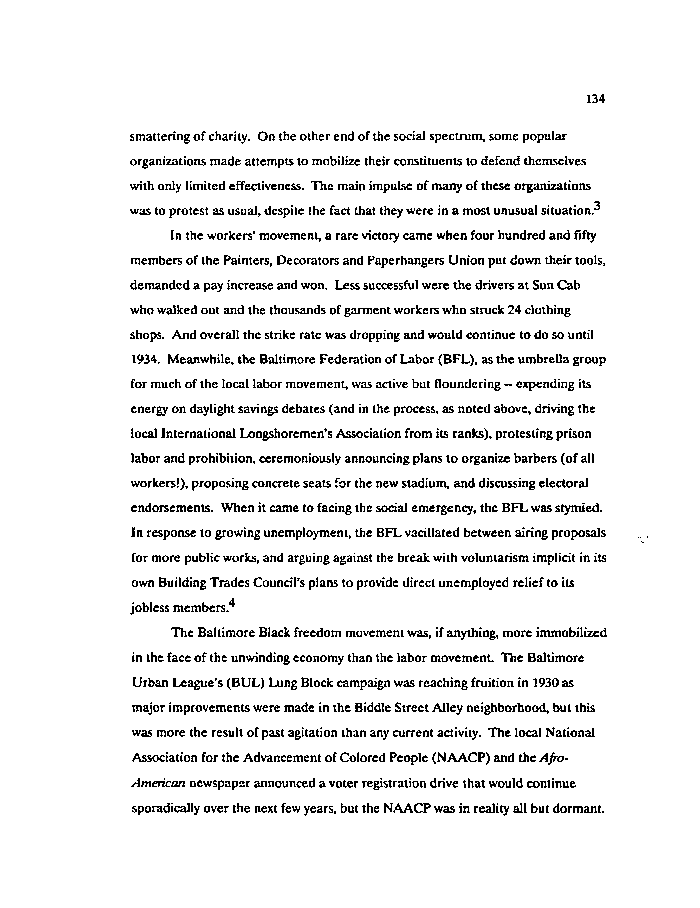|
134
smattering of charity. On the other end of the social spectrum, some popular
organizations made attempts to mobilize their constituents to defend themselves
with only limited effectiveness. The main impulse of many of these organizations
was to protest as usual, despite the fact that they were in a most unusual situation.
In the workers' movement, a rare victory came when four hundred and fifty
members of the Painters, Decorators and Paperhangers Union put down their tools,
demanded a pay increase and won. Less successful were the drivers at Sun Cab
who walked out and the thousands of garment workers who struck 24 clothing
shops. And overall the strike rate was dropping and would continue to do so until
1934. Meanwhile, the Baltimore Federation of Labor (BFL), as the umbrella group
for much of the local labor movement, was active but floundering — expending its
energy on daylight savings debates (and in the process, as noted above, driving the
local International Longshoremen's Association from its ranks), protesting prison
labor and prohibition, ceremoniously announcing plans to organize barbers (of all
workers!), proposing concrete seats for the new stadium, and discussing electoral
endorsements. When it came to facing the social emergency, the BFL was stymied.
In response to growing unemployment, the BFL vacillated between airing proposals
for more public works, and arguing against the break with voluntarism implicit in its
own Building Trades Council's plans to provide direct unemployed relief to its
jobless members.
The Baltimore Black freedom movement was, if anything, more immobilized
in the face of the unwinding economy than the labor movement. The Baltimore
Urban League's (BUL) Lung Block campaign was reaching fruition in 1930 as
major improvements were made in the Biddle Street Alley neighborhood, but this
was more the result of past agitation than any current activity. The local National
Association for the Advancement of Colored People (NAACP) and the Afro-
American newspaper announced a voter registration drive that would continue
sporadically over the next few years, but the NAACP was in reality all but dormant.
|

